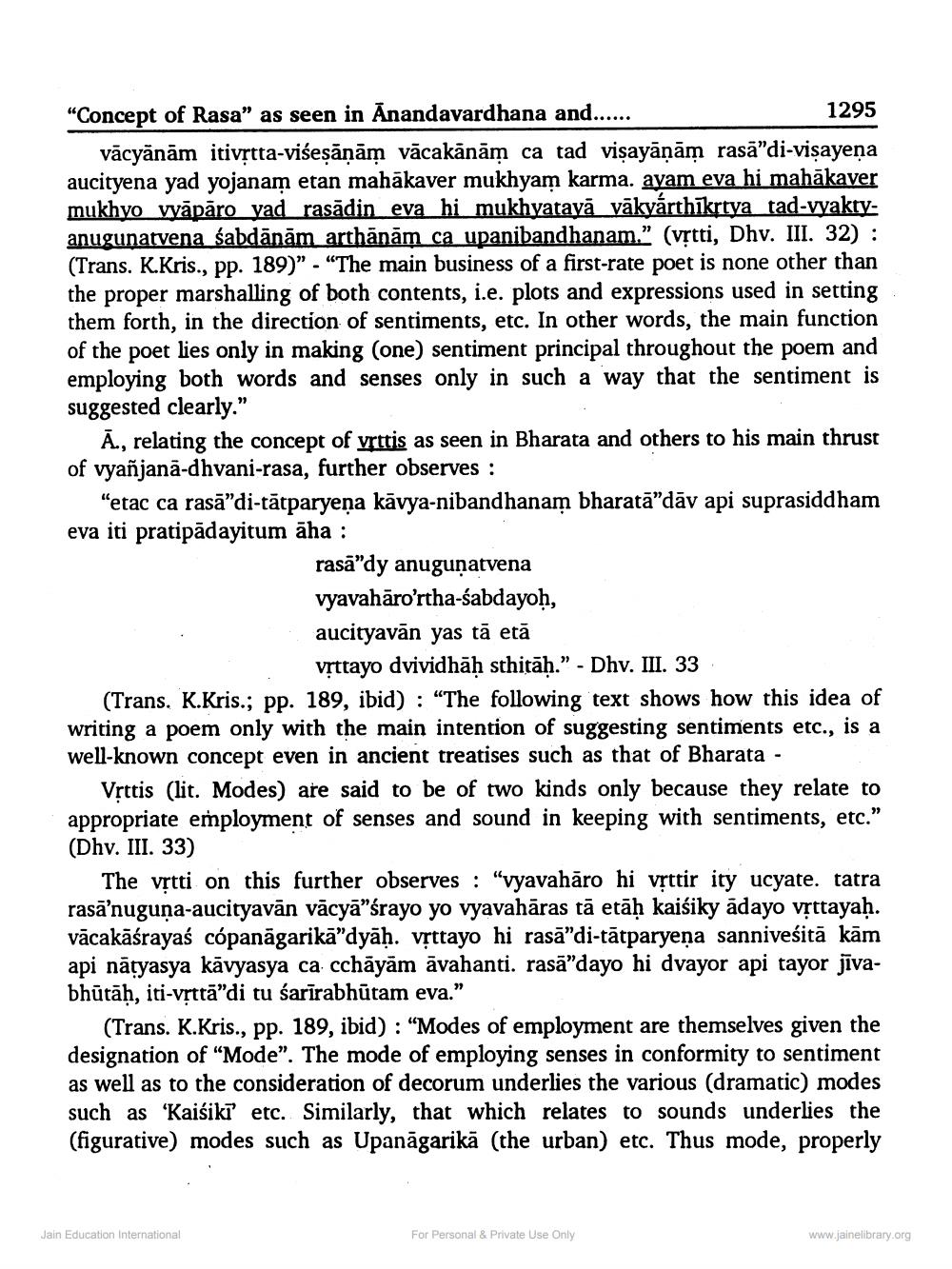________________
"Concept of Rasa” as seen in Anandavardhana and......
1295 vācyānām itivștta-višeşāņām vācakānām ca tad viņayāņām rasā”di-vișayeņa aucityena yad yojanam etan mahākaver mukhyam karma. avam eva hi mahākaver mukhyo wāpāro vad rasādin eva hi mukhyatavā vākyarthīkrtya tad-vyaktyanugunatvena śabdānām arthänām ca upanibandhanam.” (vrtti, Dhv. III. 32) : (Trans. K.Kris., pp. 189)". "The main business of a first-rate poet is none other than the proper marshalling of both contents, i.e. plots and expressions used in setting them forth, in the direction of sentiments, etc. In other words, the main function of the poet lies only in making (one) sentiment principal throughout the poem and employing both words and senses only in such a way that the sentiment is suggested clearly."
Ā., relating the concept of vrttis as seen in Bharata and others to his main thrust of vyañjanā-dhvani-rasa, further observes :
"etac ca rasā"di-tātparyeņa kāvya-nibandhanam bharatā”dāv api suprasiddham eva iti pratipadayitum äha :
rasā"dy anuguņatvena vyavahāro'rtha-sabdayoh, aucityavān yas tā etā
vṛttayo dvividhāḥ sthitā).” - Dhv. III. 33 (Trans. K.Kris.; pp. 189, ibid): "The following text shows how this idea of writing a poem only with the main intention of suggesting sentiments etc., is a well-known concept even in ancient treatises such as that of Bharata -
Vịttis (lit. Modes) are said to be of two kinds only because they relate to appropriate employment of senses and sound in keeping with sentiments, etc.” (Dhv. III. 33)
The vștti on this further observes : "vyavahāro hi vịttir ity ucyate. tatra rasā'nuguna-aucityavan vacya"śrayo yo vyavahāras tā etāh kaiśiky adayo vịttayaḥ. vācakāśrayaś cópanāgarikā"dyāḥ. vșttayo hi rasā"di-tātparyena sannivesitā kām api nātyasya kāvyasya ca cchāyām āvahanti. rasā”dayo hi dvayor api tayor jīvabhūtāḥ, iti-vșttā"di tu śarīrabhūtam eva.”
(Trans. K.Kris., pp. 189, ibid) : "Modes of employment are themselves given the designation of "Mode". The mode of employing senses in conformity to sentiment as well as to the consideration of decorum underlies the various (dramatic) modes such as "Kaiśiki etc. Similarly, that which relates to sounds underlies the (figurative) modes such as Upanāgarikā (the urban) etc. Thus mode, properly
Jain Education International
For Personal & Private Use Only
www.jainelibrary.org




